
Comparative analysis of suitability of fractional derivatives in modelling the practical capacitor (2022)
Title : Comparative analysis of suitability of fractional derivatives in modelling the practical capacitor
Researcher : Banchuin, R.
Department : Faculty of Engineering, & Graduated School of IT, Siam University, Bangkok, Thailand
Email : rawid.ban@siam.edu
Abstract :
Purpose
Design/methodology/approach
Findings
Originality/value
Link to article : COMPEL – The International Journal for Computation and Mathematics in Electrical and Electronic Engineering, 2022, 41(1), 304-318. https://doi.org/10.1108/COMPEL-08-2021-0293
Journal : COMPEL – The International Journal for Computation and Mathematics in Electrical and Electronic Engineering / in Scopus
Citation : Banchuin, R. (2022). Comparative analysis of suitability of fractional derivatives in modelling the practical capacitor. COMPEL – The International Journal for Computation and Mathematics in Electrical and Electronic Engineering, 41(1), 304-318. https://doi.org/10.1108/COMPEL-08-2021-0293
ฐานข้อมูลงานวิจัย มหาวิทยาลัยสยาม : https://e-research.siam.edu/kb/comparative-analysis-of-suitability/
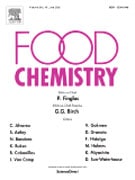
Comparison of aroma active and sulfur volatiles in three fragrant rice cultivars using GC–Olfactometry and GC–PFPD (2014)
Researcher : Kanjana Mahattanatawee*, Russell L. Rouseff
Department : *Food Technology Department, Faculty of Science, Siam University
E-mail : *kanjana@siam.edu
Abstract : Aroma volatiles from three cooked fragrant rice types (Jasmine, Basmati and Jasmati) were characterised and identified using SPME GC–O, GC–PFPD and confirmed using GC–MS. A total of 26, 23, and 22 aroma active volatiles were observed in Jasmine, Basmati and Jasmati cooked rice samples. 2-Acetyl-1-pyrroline was aroma active in all three rice types, but the sulphur-based, cooked rice character impact volatile, 2-acetyl-2-thiazoline was aroma active only in Jasmine rice. Five additional sulphur volatiles were found to have aroma activity: dimethyl sulphide, 3-methyl-2-butene-1-thiol, 2-methyl-3-furanthiol, dimethyl trisulphide, and methional. Other newly-reported aroma active rice volatiles were geranyl acetate, β-damascone, β-damascenone, and ɑ-ionone, contributing nutty, sweet floral attributes to the aroma of cooked aromatic rice. The first two principal components from the principal component analysis of sulphur volatiles explained 60% of the variance. PC1 separated Basmati from the other two cultivars and PC2 completely separated Jasmine from Jasmati cultivars.
Keywords: PCA, Cooked rice, Headspace SPME
Link to Publication: Food Chemistry/ in Sopus
Bibliography : Mahattanatawee, K., & Rouseff, R. L.(2014). Comparison of aroma active and sulfur volatiles in three fragrant rice cultivars using GC–Olfactometry and GC–PFPD. Food Chemistry, 154, 1-6.
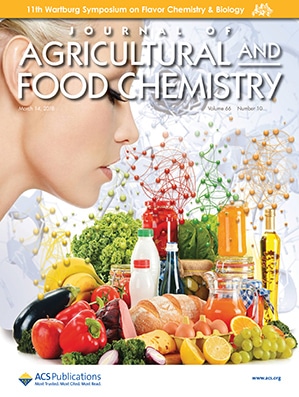
Comparison of Aroma Character Impact Volatiles of Thummong Leaves (Litsea petiolata Hook. f.), Mangdana Water Beetle (Lethocerus indicus), and a Commercial Product as Flavoring Agents in Thai Traditional Cooking (2018)
Researcher : Kanjana Mahattanatawee, Torsak Luanphaisarnnont, Russell Rouseff
Department : Food Technology Department, Faculty of Science, Siam University
E-mail : kanjana@siam.edu
Abstract : Thummong (Litsea petiolata Hook. f.) is a tree native to southern Thailand. The leaves of this tree are highly aromatic and used to flavor Thai dishes in place of the traditional water beetle Mangdana (Lethocerus indicus) for religious and cultural reasons. Total and aroma-active volatiles from both flavoring materials were compared using gas chromatography–olfactory (GC–O) and gas chromatography–mass spectrometry (GC–MS). The volatiles from Thummong leaves and the Mangdana water beetle were collected and concentrated using headspace solid-phase microextraction. A total of 23 and 25 aroma-active volatiles were identified in Thummong leaves and Mangdana, respectively. The major aroma-active volatiles in Thummong leaves consisted of 7 aldehydes, 5 ketones, and 3 esters. In contrast, the aroma-active volatiles in the water beetle consisted of 11 aldehydes, 3 esters, and 2 ketones. Both had (E)-2-nonenal as the most intense aroma-active volatile. The water beetle character impact volatile (E)-2-hexenyl acetate was absent in the leaves, but its aroma character was mimicked by 11-dodecen-2-one in the leaves, which was absent in the beetle. In addition, a commercial Mangdana flavoring was examined using GC–O and GC–MS and found to contain only a single aroma-active volatile, hexyl acetate. All three flavoring sources exhibited similar aroma characteristics but were produced from profoundly different aroma-active volatiles.
Link to Publication: Journal of Agricultural and Food Chemistry, Vol.66 Issue 10 March 2018
Bibliography : Mahattanatawee, K., Luanphaisarnnont, T., & Rouseff R. (2018). Comparison of aroma character impact volatiles of thummong leaves (litsea petiolata hook. f.), Mangdana water beetle (lethocerus indicus), and a commercial product as flavoring agents in Thai traditional cooking. Journal of Agricultural and Food Chemistry, 66(10), 2480-2484.
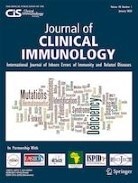
Compound Heterozygous PGM3 Mutations in a Thai Patient with a Specific Antibody Deficiency Requiring Monthly IVIG Infusions (2020)
Title : Compound Heterozygous PGM3 Mutations in a Thai Patient with a Specific Antibody Deficiency Requiring Monthly IVIG Infusions
Researcher : Clin.Prof.Suwat Benjaponpitak
Department : Faculty of Medicine, Siam University, Bangkok, Thailand
E-mail : med@siam.edu
Link to Academic article: DOI: 10.1007/s10875-019-00693-6
Journal : Journal of Clinical Immunology Vol. 40, No. 1, 2020
Bibliography : Ittiwut, C., Manuyakorn, W., Tongkobpetch, S., Benjaponpitak, S., Fisher, M. R., Milner, J. D., Lyons, J. J., Suphapeetiporn, K., & Shotelersuk, V. (2020, January). Compound Heterozygous PGM3 Mutations in a Thai Patient with a Specific Antibody Deficiency Requiring Monthly IVIG Infusions. J Clin Immunol, 40(1), 227-231. doi: 10.1007/s10875-019-00693-6. Epub 2019 Nov 9. PMID: 31707513.
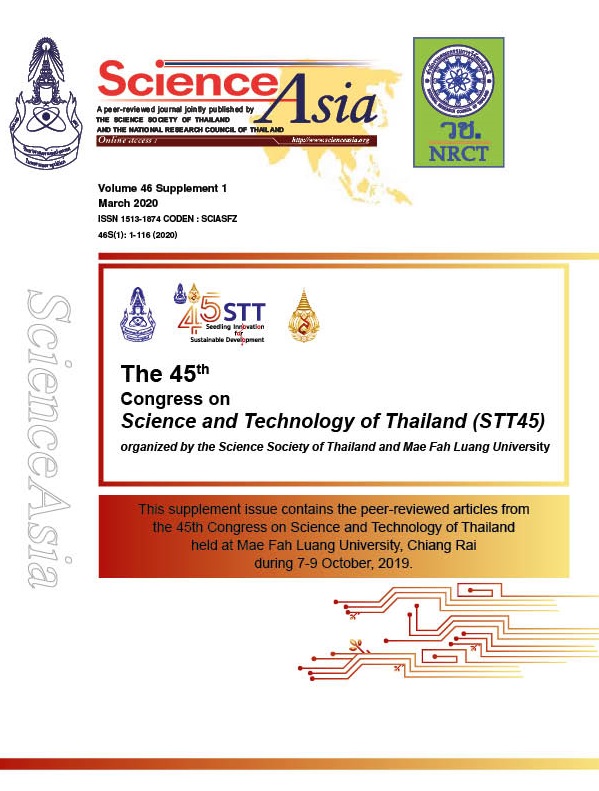
Conventional and microwave-assisted extraction for bioactive compounds from dried coffee cherry peel by-products and antioxidant activity of the aqueous extracts (2020)
Title : Conventional and microwave-assisted extraction for bioactive compounds from dried coffee cherry peel by-products and antioxidant activity of the aqueous extracts
Researcher : Thaiphanit, S., Wedprasert, W., Srabua, A.
Department : ภาควิชาเทคโนโลยีการอาหาร คณะวิทยาศาสตร์ มหาวิทยาลัยสยาม
E-mail : somruedee.tha@siam.edu
ฐานข้อมูลงานวิจัย มหาวิทยาลัยสยาม: https://e-research.siam.edu/kb/conventional-and-microwave-assisted-extraction-for-bioactive-compounds-from-dried-coffee-cherry-peel-by-products-and-antioxidant-activity-of-the-aqueous-extracts/
Link to article: ScienceAsia, 2020, 46 S(1), pp. 12–18. https://www.scienceasia.org/content/viewabstract_progress.php?ms=11118
Journal : ScienceAsia / in Scopus
Bibliography : Somruedee Thaiphanit, Warintorn Wedprasert and Aristha Srabua. (2020). Conventional and microwave-assisted extraction for bioactive compounds from dried coffee cherry peel by-products and antioxidant activity of the aqueous extracts. ScienceAsia, 46S(1), 12-18.
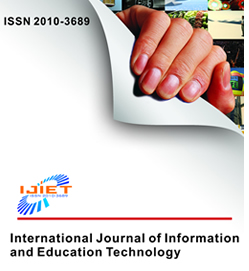
Creating and Collecting e-Learning Event Logs to Analyze Learning Behavior of Students through Process Mining (2023)
Title : Creating and Collecting e-Learning Event Logs to Analyze Learning Behavior of Students through Process Mining
Researcher : Nammakhunt, A., Porouhan, P., Premchaiswadi, W.
Department : Doctor of Philosophy Program in Information Technologyy, Graduate School, Siam University
E-mail :
ฐานข้อมูลงานวิจัย มหาวิทยาลัยสยาม : https://e-research.siam.edu/kb/creating-and-collecting-e-learning/
Link to article: International Journal of Information and Education Technology, 2023, 13(2), pp. 211–222, 1798. https://doi.org/10.18178/ijiet.2023.13.2.1798
Publication: International Journal of Information and Education Technology / in Scopus
Bibliography : Nammakhunt, A., Porouhan, P., Premchaiswadi, W. (2023). Creating and Collecting e-Learning Event Logs to Analyze Learning Behavior of Students through Process Mining. International Journal of Information and Education Technology, 13(2), 211–222, 1798. https://doi.org/10.18178/ijiet.2023.13.2.1798
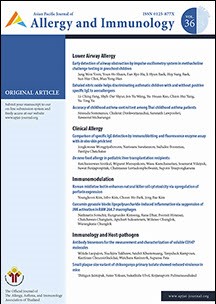
De novo food allergy in pediatric liver transplantation recipients (2018)
Title : De novo food allergy in pediatric liver transplantation recipients
Researcher : Clin.Prof.Suwat Benjaponpitak
Department : Faculty of Medicine, Siam University, Bangkok, Thailand
E-mail : med@siam.edu
Abstract : Background: Food allergy (FA) prevalence is increasing in pediatric liver transplantation (LT). However, the clinical course is still limited.
Objective: This retrospective cohort study aimed to identify the prevalence, risk factors, and the natural history of de novo FA in children post LT.
Methods: Medical records of pediatric LT recipients from Jan 2001 – Dec 2014 were reviewed. De novo FA was diagnosed by symptoms after exposure to culprit food occurring after LT, and improvement after diet elimination. FA was confirmed if reproduced symptoms after re-challenge or documented sensitization or indicated gastrointestinal eosinophilia.
Results: Among 46 post LT children, 54.3% developed de novo FA at a median time of 12.2 months [Interquartile range (IQR) 6.2, 21.3 months] post LT. The confirmed FA was 39.1%. Gastrointestinal symptom was the most common manifestation followed by skin, anaphylaxis, and others. Culprit foods were cow’s milk, shellfish, egg, wheat, soybean, peanut, coconut, fish and monosodium glutamate. The risk factors of FA were transplantation during age below 2 years [hazard ratio (HR), 2.62; 95% confidence interval (CI), 1.04 – 6.59; p = 0.03), atopic history in family (HR, 5.67; 95% CI, 1.33 – 24.12; p = 0.01), and Epstein-Barr (EBV) viremia (HR, 2.39; 95% CI, 1.02 – 5.63; p = 0.04).
Conclusions: de novo FA in pediatric LT is not uncommon. Age at LT younger than 2 years, family history of atopy, and EBV viremia are associated with developing FA. Development of tolerance after elimination culprit diets for 3 years is similar to general population.
Key words: Food allergy, liver transplantation, tolerance, outgrown, de novo food allergy
Link to Academic article: DOI: 10.12932/AP-080217-0007
Journal : Asian Pacific journal of allergy and immunology
Bibliography : Sinitkul, R., Manuyakorn, W., Kamchaisatian, W., Vilaiyuk, S., Benjaponpitak, S., Lertudompholwanit, C., & Treepongkaruna, S. (2018, September). De novo food allergy in pediatric liver transplantation recipients. Asian Pac J Allergy Immunol, 36(3), 166-174. doi: 10.12932/AP-080217-0007. PMID: 29161056.
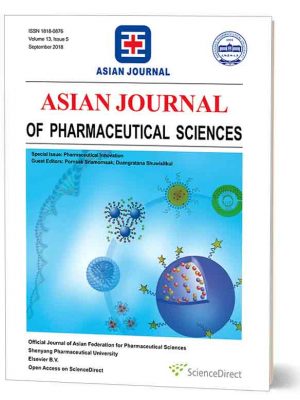
Determination of mono-, di-, and trilaurin in modified coconut oil using HPLC–ELSD (2016)
Abstract
Modified coconut oil (MCO) enriched with monolaurin (ML) was prepared by the glycerolysis of coconut oil [1]. Glycerolysis converts dilaurin (DL) and trilaurin (TL) into ML, the lauric acidmonoglyceride. ML has been found to have antiviral, antibacterial and antifungal activities[2]. According to the antimicrobial activity, the glyceride composition of MCO was determined. The concentrations of ML, DL, and TL in MCO were analyzed using high-performance liquid chromatography–evaporative light scattering detector (HPLC–ELSD).
The HPLC–ELSD analyses were performed using an HPLC 1200 series equipped with an ELSD and a ZORBAX Eclipse Plus C18 column (4.6 × 250 mm, 5 µm) from Agilent Technologies Inc. The mobile phase consisted of 0.01% (v/v) acetic acid in acetonitrile(solvent A) and acetone (solvent B) and was degassed by ultrasonic bath prior to use. The HPLC column temperature was 25 °C. The mobile phase was maintained at a flow rate of 1.0 ml/min with the following gradient condition: solvent A:solvent B (90:10 v/v) from 0 to 5 min to solvent A:solvent B (70:30 v/v) from 5 to 10 min to solvent A:solvent B (50:50 v/v) from 10 to 15 min to solvent A:solvent B (30:70 v/v) from 15 to 20 min to solvent A:solvent B (20:80 v/v), and then held for 10 min. The equilibration time between runs was 10 min and the injection volume used was 10 µl. The temperature of the nebulization was set at 40 °C and nitrogen gas was 3.5 bar.
The ELSD were capable of a linear response (R2 > 0.9995) independent of individual glyceride molecular structures at concentrations between ~0.02 and 0.40 mg/ml. Intra- and inter-day reproducibility (n = 5) were evaluated under the optimized conditions. The relative standard deviations for glycerides were less than 2.45%. The detection limits (LODs) and the quantification limits (LOQs) were lower than 0.054 and 0.162 mg/ml, respectively. The efficiency of this method, measured through the recoveries, was higher than 96.06%. The elution order of the standards was ML < DL < TL as shown in Fig. 1. The DL and TL standards eluted after the ML standard, indicating that the hydroxyl moiety on the glycerol backbone contributed significantly to retention. The concentrations of ML, DL, and TL of MCO derived from various conditions of glycerolysis were in the ranges of 102.70–247.25 mg/ml (ML), 52.65–79.87 mg/ml (DL), and 12.27–39.60 mg/ml (TL).
Keywords: Monolaurin, Dilaurin, Trilaurin, Modified coconut oil, HPLC–ELSD
Link to Publication: https://www.sciencedirect.com/science/article/pii/S1818087615001889
Bibliography : Juthaporn Ponphaiboon, Sirikarn Pengon, Amornrat Chaidedgumjorn, Sontaya Limmatvapirat and Chutima Limmatvapirat. (2016). Determination of mono-, di-, and trilaurin in modified coconut oil using HPLC–ELSD. Asian Journal of Pharmaceutical Sciences, 11(1), 223-224. (conference abstract).

Development of Encapsulated Wasabi Flavor for Resistance in High Temperature Condition (2023)
Title : Development of Encapsulated Wasabi Flavor for Resistance in High Temperature Condition
Researcher : Chintong, S., Sukosi, K., Saengrung, J., Limpawattana, M., Klaypradit, W.
Department : สำนักอธิการบดี มหาวิทยาลัยสยาม
E-mail : maruj.lim@siam.edu
ฐานข้อมูลงานวิจัย มหาวิทยาลัยสยาม : –
Link to article: Trends in Sciences, 2023, 20(9), 6758. https://doi.org/10.48048/tis.2023.6758
Journal : Trends in Sciences / in Scopus
Bibliography : Chintong, S. ., Sukosi, K. ., Saengrung, J. ., Limpawattana, M. ., & Klaypradit, W. . (2023). Development of Encapsulated Wasabi Flavor for Resistance in High Temperature Condition. Trends in Sciences, 20(9), 6758. https://doi.org/10.48048/tis.2023.6758
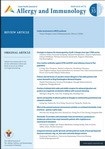
Effect of vitamin D on lung function assessed by forced oscillation technique in asthmatic children with vitamin D deficiency: A randomized double-blind placebo-controlled trial (2019)
Title : Effect of vitamin D on lung function assessed by forced oscillation technique in asthmatic children with vitamin D deficiency: A randomized double-blind placebo-controlled trial
Researcher : Clin.Prof.Suwat Benjaponpitak
Department : Faculty of Medicine, Siam University, Bangkok, Thailand
E-mail : med@siam.edu
Abstract : Background: The role of vitamin D and asthma in pulmonary function changes showed conflicting result.
Objective: To evaluate if vitamin D treatment would improve lung function assessed by forced oscillation technique (FOT) in vitamin D deficient asthmatic children.
Methods: A randomized double-blind placebo-controlled trial was performed in children, aged 3-18 years with well controlled asthma. Serum total 25(OH)D and FOT parameters including respiratory resistance at 5 Hz (R5), at 20 Hz (R20), respiratory reactance at 5 Hz (X5) and area of reactance (ALX), resonance frequency (Fres) were evaluated at baseline, 1 month and 3 months. Vitamin D deficient patients (serum total 25(OH)D < 20 ng/ml) were randomized to receive treatment with vitamin D2 (tVDD) or placebo (pVDD). Non-vitamin D deficient patients (nVDD) received placebo as a control group.
Results: A total of 84 children were recruited, 43 patients in nVDD group, 20 in tVDD group and 21 in pVDD group. There were no significant differences in age, sex, height and weight among groups. There were no significant differences of FOT parameters among groups at all visits. There was a trend toward decrease in R5/R20 from baseline to 1 month and 3 months visit in all groups, but the statistically significant improvement was observed only in nVDD group. Serum 25(OH)D showed no correlation with % predicted of FOT measures.
Conclusion: Vitamin D treatment in asthmatic children who had vitamin D deficiency may have no short term beneficial effect on pulmonary function assessed by FOT. Vitamin D supplementation in all asthmatic patient needs further study.
Link to Academic article: DOI: 10.12932/AP-010519-0553
Journal : Asian Pacific journal of allergy and immunology
Bibliography : Swangtrakul, N., Manuyakorn, W., Mahachoklertwattana, P., Kiewngam, P., Sasisakulporn, C., Jotikasthirapa, W., Kamchaisatian, W., & Benjaponpitak, S. (2019, December 14). Effect of vitamin D on lung function assessed by forced oscillation technique in asthmatic children with vitamin D deficiency: A randomized double-blind placebo-controlled trial. Asian Pac J Allergy Immunol, doi: 10.12932/AP-010519-0553. Epub ahead of print. PMID: 31837209.